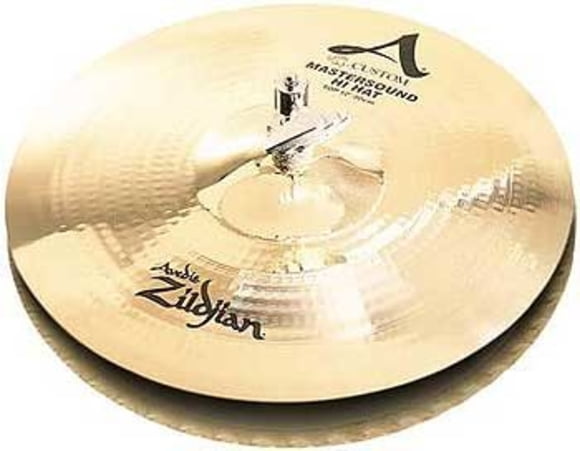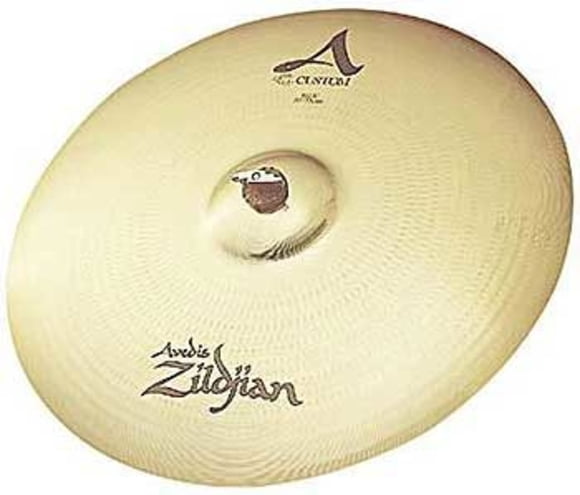7. Cymbals
The cymbals are independent musical instruments and contribute greatly to the sound of the drum kit as a whole. This is why special care should be taken when choosing them. The selection is huge and ranges from inexpensive, factory-pressed brass cymbals to hand-made instruments manufactured from high-end B20 alloys. There is something for every budget and every sound! Because they are a whole subject of their own, we have put together a separate Online Guide on Cymbals.
Complete drum kit bundles do not usually come with cymbals, unless it is clearly stated otherwise. For beginners, a Hi-hat, a ride cymbal and a crash cymbal will generally be sufficient. Splash and China cymbals are so-called effect cymbals and may be added later. Here, we'll take a look at the the standard variants.
Hi-hat cymbals

Hi-Hat
The Hi-hat consists of a bottom and a top cymbal, sold as a matched pair. The most common diameter is 14". Both cymbals are mounted on the Hi-hat stand and can be played by foot and with drum sticks. By opening the Hi-hat to varying degrees, a variety of sounds can be produced.
Ride cymbal

Ride Cymbal
The ride cymbal commonly measures 20" in diameter and is the second accompanying cymbal in the drum kit, the Hi-hat being the first. Like the Hi-hat, it is mostly used for steady time-keeping patterns to complement the groove of the bass and snare drums. Thicker cymbals have more "ping", making them a good choice for louder styles, while thinner cymbals have more "wash" and may also be used as large crash or crash/ride cymbals. The bell in the centre of the cymbal has a distinct, piercing sound ideally suited to accented figures.
Crash cymbal

Crash cymbal
The crash cymbal is primarily used for accents. It is played to emphasize sections and "hits" within the arrangement of a song, especially on the downbeat after a fill-in. In some styles, the crash cymbal may also be used to play steady, accompanying patterns like the Hi-hat and ride. The most common size for crash cymbals is 16". Advanced players should consider adding a second, larger crash to increase their sonic possibilities.





